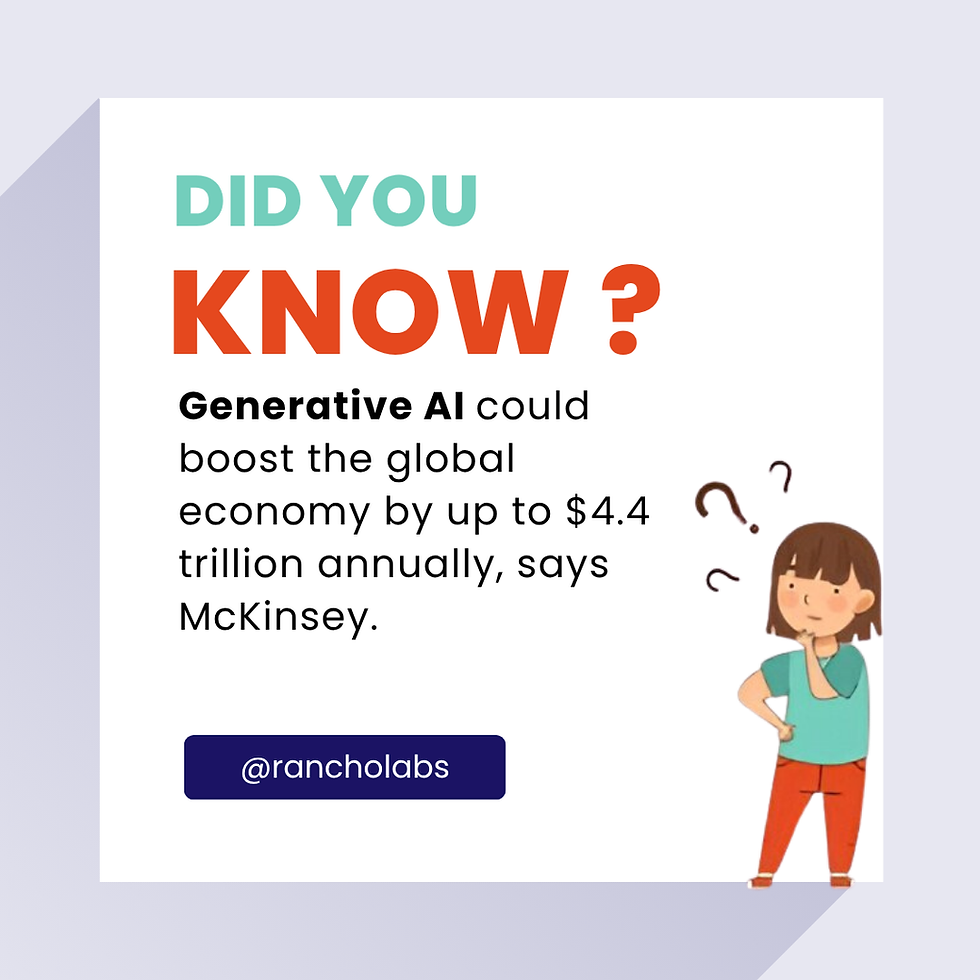What Is the Main Goal of Generative AI? Explained Simply with Examples
- payal66
- Jun 18, 2025
- 3 min read
Unlock the fascinating world of generative AI—the technology behind ChatGPT, DALL·E, and more. Learn its core purpose, best use cases, and how it differs from other AI—without the jargon.

Table of Contents
Introduction: Why Everyone’s Asking About Generative AI in 2025
In 2025, generative AI is no longer a sci-fi concept—it’s mainstream:
ChatGPT writes emails and essays.
DALL·E creates artwork from text prompts.
AI tools generate code, music, and even fashion designs.
With so many breakthroughs, understanding what the main goal of generative AI is helps you see its impact—on careers, creativity, and everyday life.
What Is the Main Goal of Generative AI?
At its heart, the main goal of generative AI is to create original, human-like content—text, images, audio, or video—by learning patterns from existing data.
Unlike rule-based programs, it generates rather than just retrieves.
It studies large datasets and produces new outputs that feel authentic.
Examples:
AI writing a bedtime story.
AI creating a new pop song.
Key Feature of Generative AI That Makes It Stand Out
A standout feature of generative AI is its creativity with context:
It understands patterns—language structure, artistic styles, musical rhythm.
It adapts to prompts, themes, or specific contexts.
This versatility sets generative AI apart from older AI systems that simply follow fixed rules.
What Type of Data Is Generative AI Most Suitable For?
Generative AI shines when working with unstructured data. Think:
Free text (novels, social media posts)
Images (photos, AI-created art)
Audio (podcasts, music samples)
Video (animations, short clips)
Data Type | Why It Works |
Text | Rich grammar & storytelling |
Images | Pattern-based visual learning |
Audio & video | Temporal patterns & waveforms |
What Is a Token in Generative AI?
In generative AI, a token is like a LEGO brick—it’s the smallest piece of text the model uses to build sentences.
Example: “Hello” = “Hel”, “lo” or sometimes split differently.
Models work with sequences of tokens to generate language.
Understanding tokens helps you see how AI converts language into data it can learn from.
How Is ChatGPT Classified Within Generative AI Models?
ChatGPT is a type of Large Language Model (LLM) powered by the Transformer architecture.
It uses encoder-decoder transformer layers to generate meaningful text.
Trained on huge datasets, it learns patterns and context.
Each ChatGPT variant (v3, v4) is a version of generative AI model.

What Is the Difference Between Generative AI and Predictive AI?
Feature | Predictive AI | Generative AI |
Goal | Forecast future results | Create novel content |
Example | Credit scoring | Writing a compelling story |
Output Type | Numeric or label | Text, image, code, audio |
Technique | Regression, classification | Transformer, diffusion models |
The One Thing Generative AI Still Cannot Do
Even with its abilities, generative AI can’t truly comprehend or imagine:
It lacks real understanding or intent.
It can make factual errors—"hallucinate" data.
It cannot develop original purpose or emotion.
We’ve seen AI write essays—but it doesn't know what it's writing about in a meaningful way.
Real‑World Use Cases of Generative AI in 2025
Healthcare: Generating synthetic medical images for research.
Creative Content: Writing blog posts, social media ads.
Education: Personalized tutoring systems.
Fashion: Designing new clothing patterns.
Entertainment: Generating scripts, composing music.
Final Thoughts
You now know what the main goal of generative AI is, how it differs from predictive AI, the type of data it uses, its key features, and limitations.
Curious to explore this hands-on? Rancho Labs offers AI Camps where students build and test generative AI models and tools. Join us to dive deeper.
FAQs
Q1. What is the main goal of generative AI?
To generate new, human-like content using learned patterns.
Q2. What data is best for generative AI?
Unstructured formats like text, images, or audio.
Q3. Is ChatGPT predictive or generative AI?
It is a generative AI LLM using transformer architecture.
Q4. What are tokens in generative AI?
The smallest units of text—like word pieces or letters.
Q5. Can generative AI truly understand emotions?
No—while it mimics emotion, it doesn’t genuinely understand feeling.




After spending some time browsing through this platform, I can confidently say it’s a goldmine for quality font. Every typeface looks thoughtfully designed, with great attention to detail and usability. I like that they offer both functional everyday fonts and more experimental styles. It’s rare to find such a balance of creativity and professionalism. Definitely worth checking out for any designer.
Tried out one of those $1 deposit casinos last week just for fun, and I was surprised at how smooth it went. Didn’t expect much from a single dollar, but I actually got some free spins and managed to stretch the playtime longer than I thought. It’s definitely not about big wins, more about testing out the casino before going in deeper. If you’re curious which ones are worth it and which to avoid, check this list: https://casinoslots.co.nz/1-dollar-deposit-casino. Pretty handy if you don’t want to dig around endlessly.